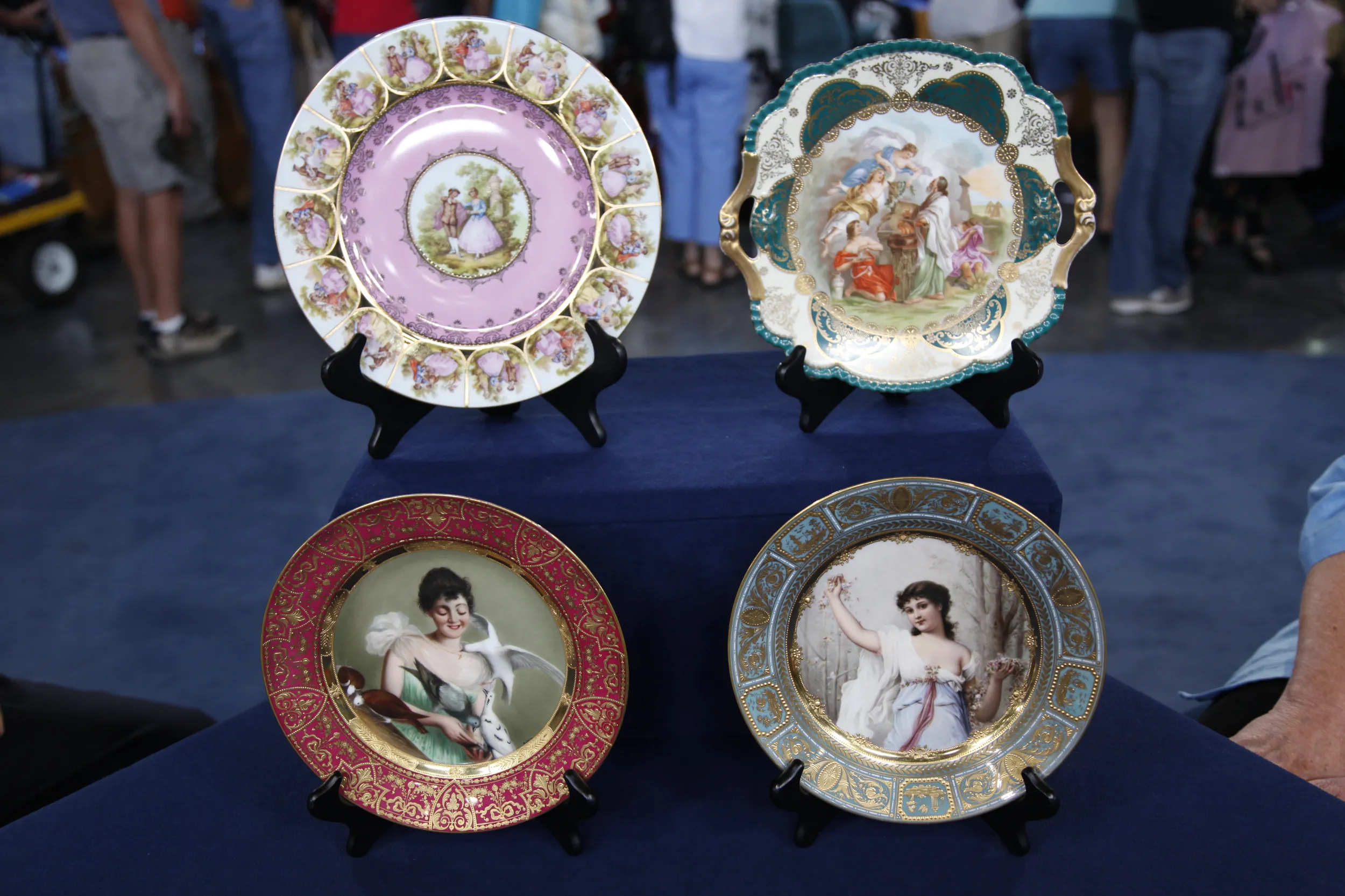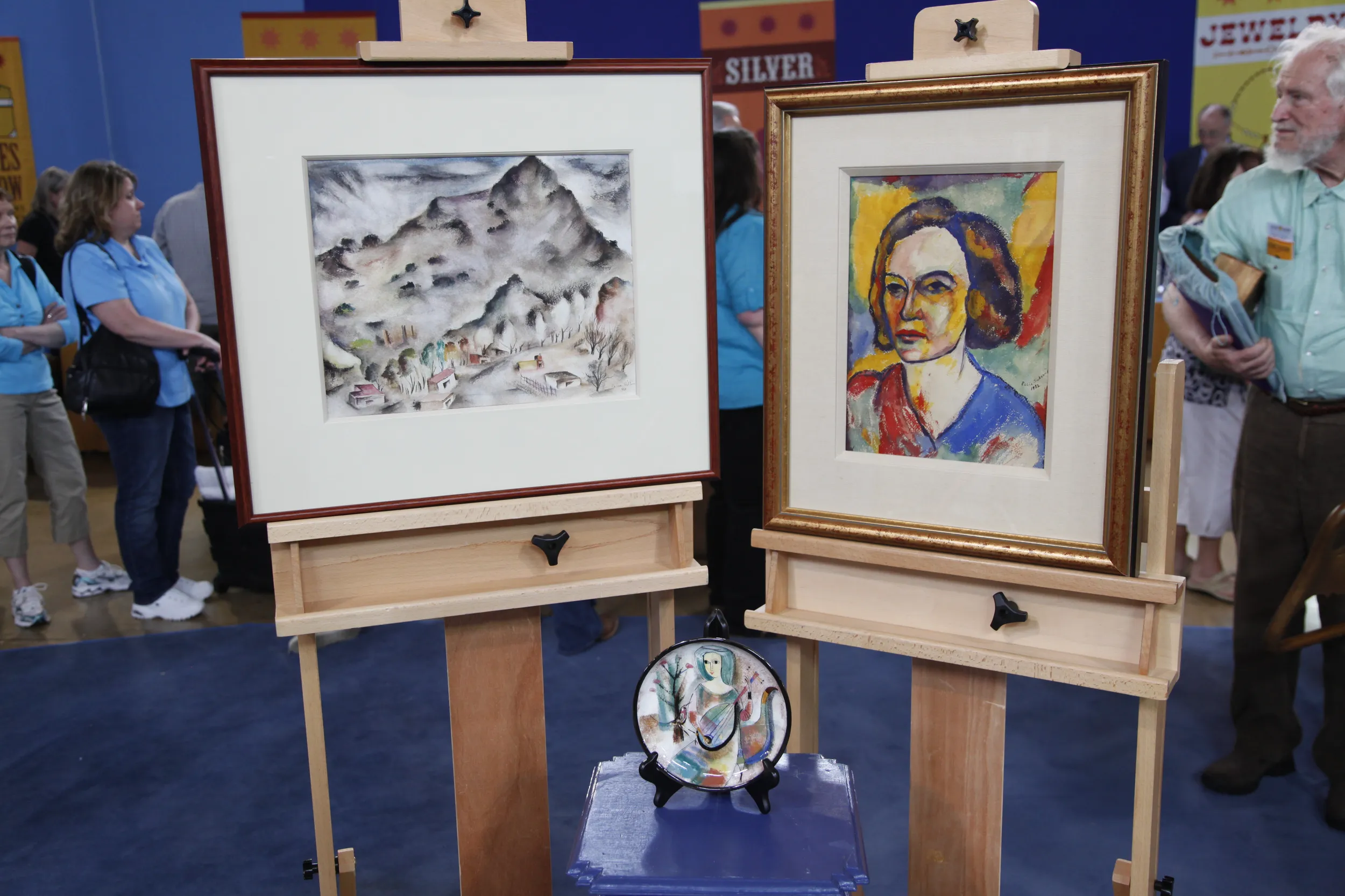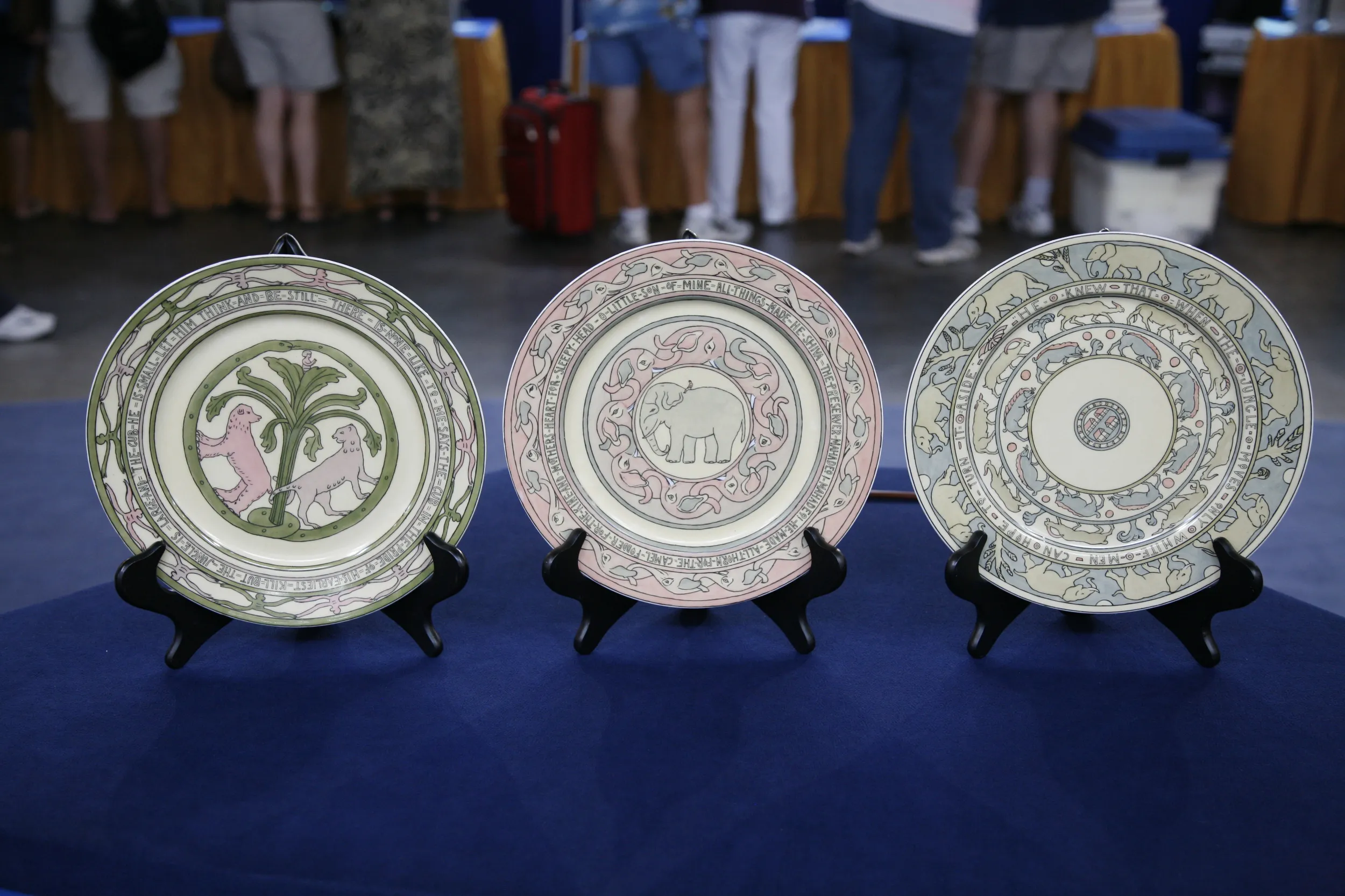GUEST: I found these at a yard sale in Berkeley. They were being sold by a faculty member's wife. She had gotten them at an antiques shop a number of years previous to that and had been told that only four sets were made and that several of the sets were owned by very famous people. I discounted that, but I bought them because they're such wonderful Arts and Crafts pieces and because the quotes and the images are based on Rudyard Kipling's The Jungle Book.
APPRAISER: That is really the essence you get when you immediately put them down. You think, "Wow, Arts and Crafts." The wonderful design details that you have with the frieze of elephants across the top and the different animals in the handcrafted pieces that you tend to find in articles from this time period, which would have been, of course, the early 20th century. Now, you mention that you had a particular interest in them from a literary perspective.
GUEST: Yes, because of the quotes from Kipling.
APPRAISER: Each one of them has a different quote; each one of them has a different scene from Mowgli's life. And we talked a little bit about some of the phrasing that they used.
GUEST: Yes, some of it is very much of the time.
APPRAISER: And one of them, the quote is that, "Only the white man can control the jungle."
GUEST: Yeah, up here it says, "He knew that when the jungle moves, only white men can hope to turn it aside."
APPRAISER: Of course, that's very period. That's the early part of the 20th century. Those are Kipling's writings. So you look at that and you say, "Wow, that's not really what we want to be saying in today's society." That's not the current thinking. So we ask, does that really affect value? Well, because it's contemporaneous with the design of the plates, and because we can't erase the past, we can only acknowledge it and say, "We can do better than that." So, in that sense, it really doesn't affect value because it's early 20th century. But now I want to turn to the artist herself. And I'm going to turn this one over here. On the back it says "designed and copyrighted by Mary Bacon Jones." And it's published by Guerin of Limoges. Now, you had some questions about that because you thought that was rather unusual. Well, I found an article that was in the December 1911 House Beautiful and it talks about how she designed these, and it made it sound as if she actually had them commissioned to be made by the Limoges factory. And I thought, "Wow, for a woman in about 1910 to do that, to ship her designs"-- the article mentions that the early proofs sent by boat, the colors weren't strong enough, and she sent them back and wanted deeper colors. And then they were being marketed in an upscale shop of some sort. And I thought that was a really interesting thing.
GUEST: How common was that for a woman at the turn of the century to do that kind of artistic and entrepreneurial activity?
APPRAISER: It's very unusual. And for an artist to have copyrighted, designed and taken the time to send these to Limoges to have them hand painted...
GUEST: Oh, see, I thought maybe they were transfer prints.
APPRAISER: No, actually they are hand painted.
GUEST: Is she likely to have sent drawings to Limoges or to have sent a set of plates she painted?
APPRAISER: I would say most likely the drawings. When we talk about how many sets there could be out there, I've never seen a set like this before. I've actually...
GUEST: So there might really only be four sets?
APPRAISER: There might be. It depends on how many she commissioned. But they stand as wonderful examples on their own, and I would say that the three plates here, at auction, I would think would bring $500 apiece.
GUEST: Okay.
APPRAISER: They're an absolute magnificent example of artist-decorated Limoges porcelain from this time period. They're just... they're just a real jewel.











